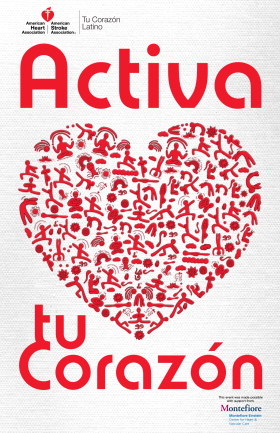
There are frequent studies and reports citing the health differences between Latinos and the rest of the U.S. population. When it comes to cardiology, the question is: How different is the heart of a Latino? The truth is that no one really knows. As a Latino myself and after 20 years of practicing cardiology, I still wonder how our hearts compare.
On Wednesday, the Montefiore Einstein Center for Heart and Vascular Health, together with the New York chapter of the American Heart Association, will conduct its fourth annual “Tu Corazón Latino Health Summit” at the Bronx Museum of the Arts.
Community leaders, members of the media, physicians and scientists will meet to discuss the impact of cardiovascular disease on the Latino population. The ultimate goal is to launch initiatives that will reduce the burden of risk factors among Latinos through legislation, education and socioeconomic development.
We will also try to shed light on the unique conditions surrounding cardiac care for the Latino community in the Bronx.
A big part of the challenge is the genetic differences within the Latino community itself. For example, my parents were European immigrants and, like me, were tall and had fair skin. Growing up in the Dominican Republic, I was always thought to be American.
Latinos from Argentina, Chile and Uruguay are also mostly European in heritage. Those from Ecuador and Peru are usually Native American. And those from the Caribbean countries tend to have mixed European and African blood.
Not only are the genetic profiles of Latinos vastly different; so are their cultures, dietary habits and habitats. This diversity makes it difficult to predict the cardiovascular event risk for an individual Latino, and therefore creates challenges in implementing primary prevention strategies beyond the usual recommendations of smoking cessation, regular exercise and a heart-healthy diet.
To make this matter even more complex, Latinos who migrate to the U.S. are exposed to quite different environmental factors than they are used to. Many grew up in rural and suburban areas, where they balanced the limited consumption of “unhealthy” foods with physical labor and physical activity, such as walking, on a more regular basis. But once they come to the U.S., many of these people find themselves losing that balance.
Unlike Manhattan, the Bronx is not a “heart-friendly environment” for the approximately 700,000 Latinos who make it their home. Residents of our county have limited access to safe walking paths; they commute to work or school by car or public transportation. Many have limited resources to make “healthy food choices,” which, by the way, are often missing at their neighborhood bodegas.
As a consequence, Latinos from the Bronx have a higher prevalence of obesity, diabetes and hypertension, factors that contribute to increase their risk of having heart attacks, heart failure, stroke and vascular disease leading to limb amputation.
The Latino Health Summit hopes to examine these complex issues, involve the community through conversation, health screenings and information and ultimately contribute to improved health for all Latinos in the Bronx.

